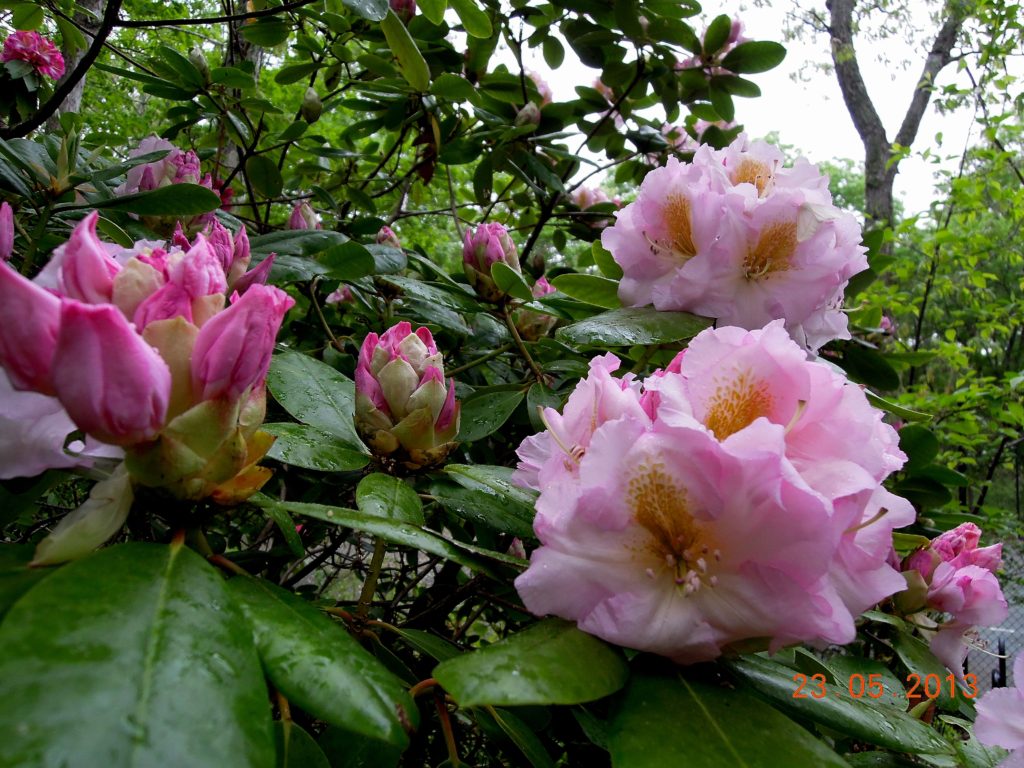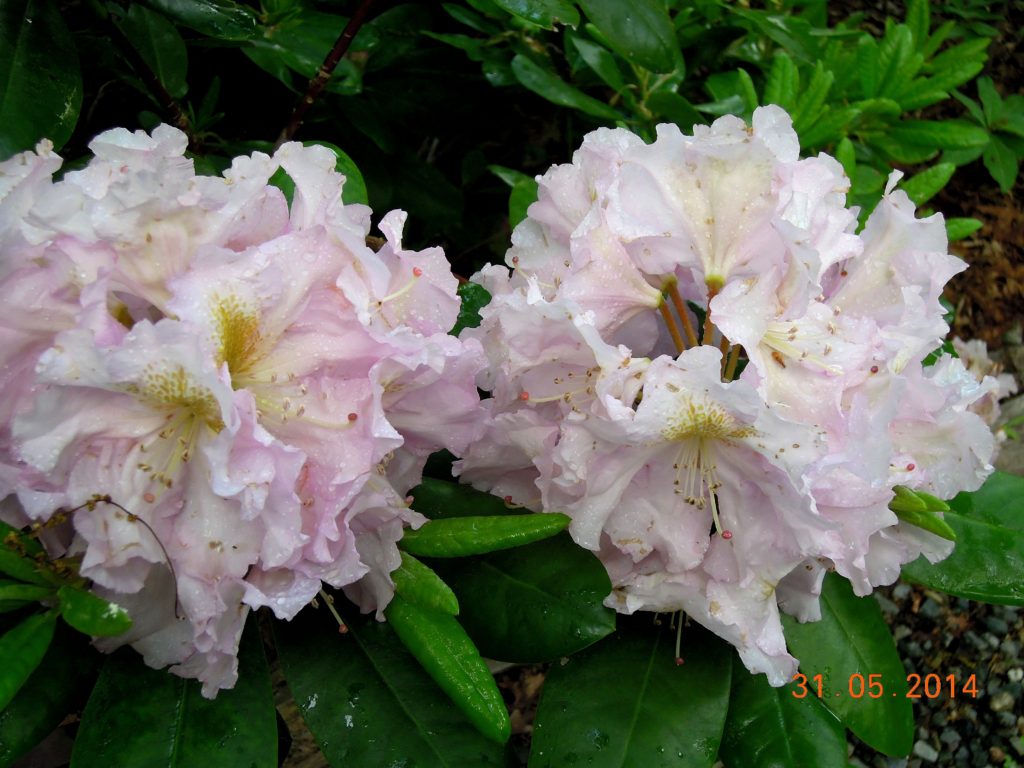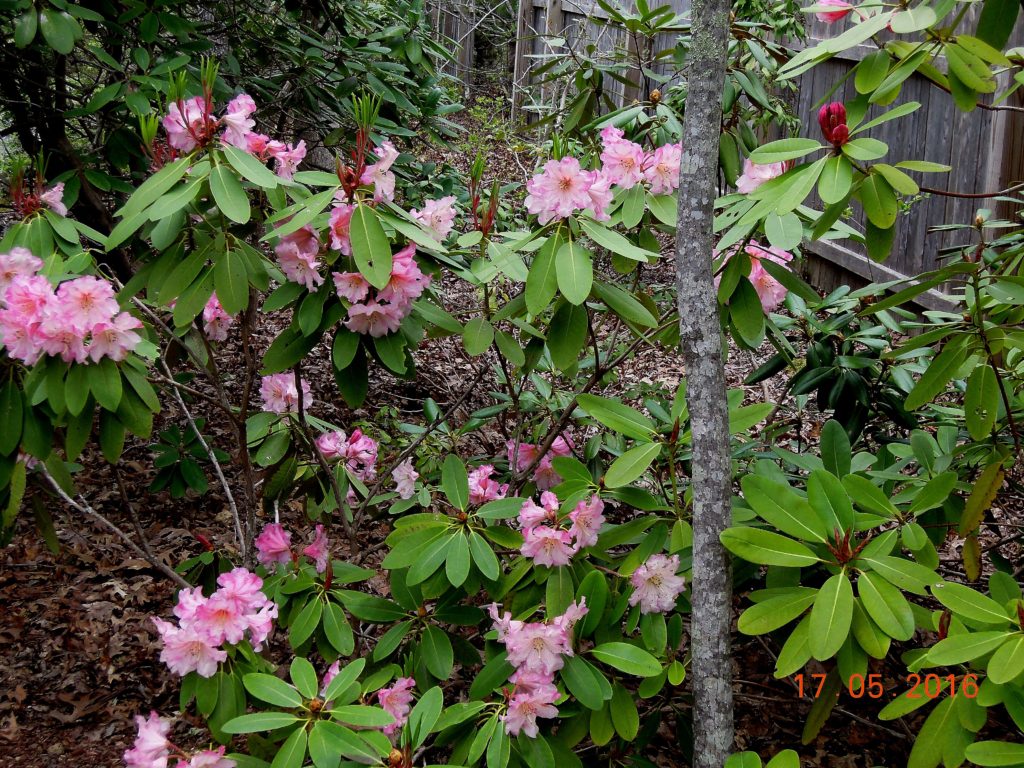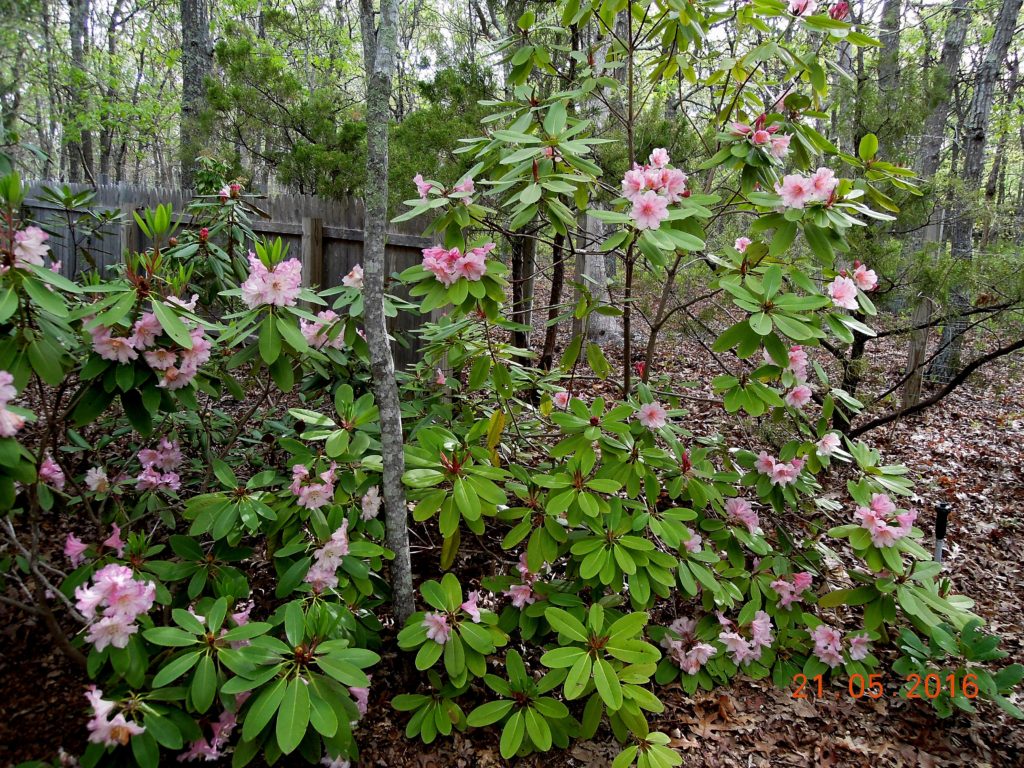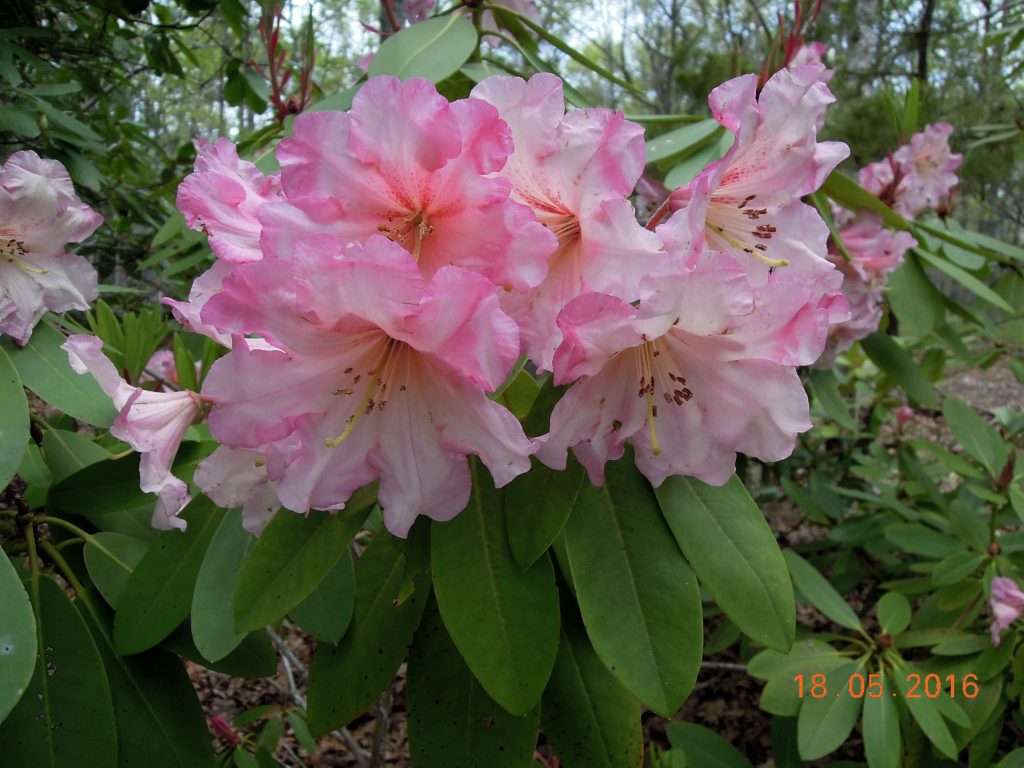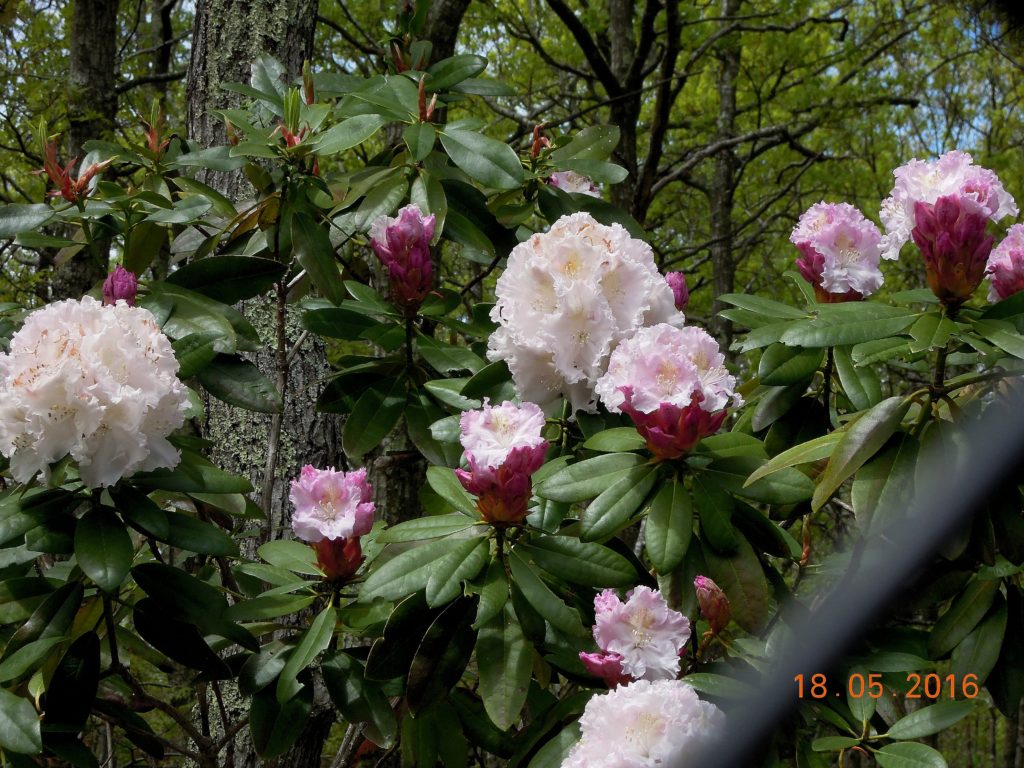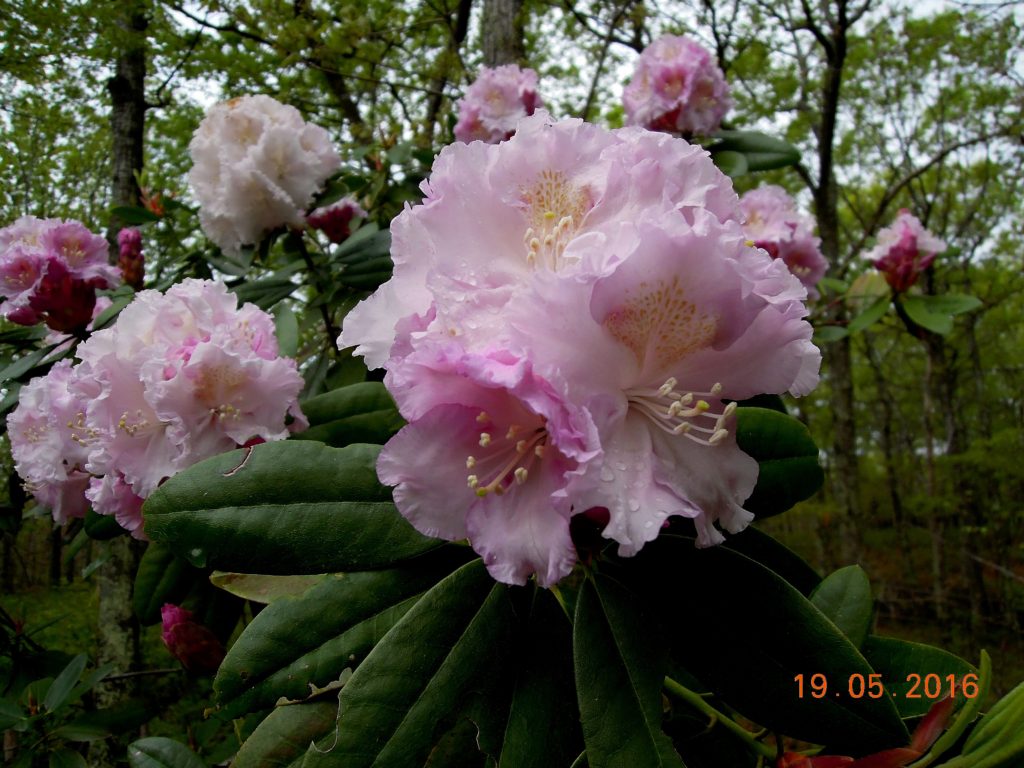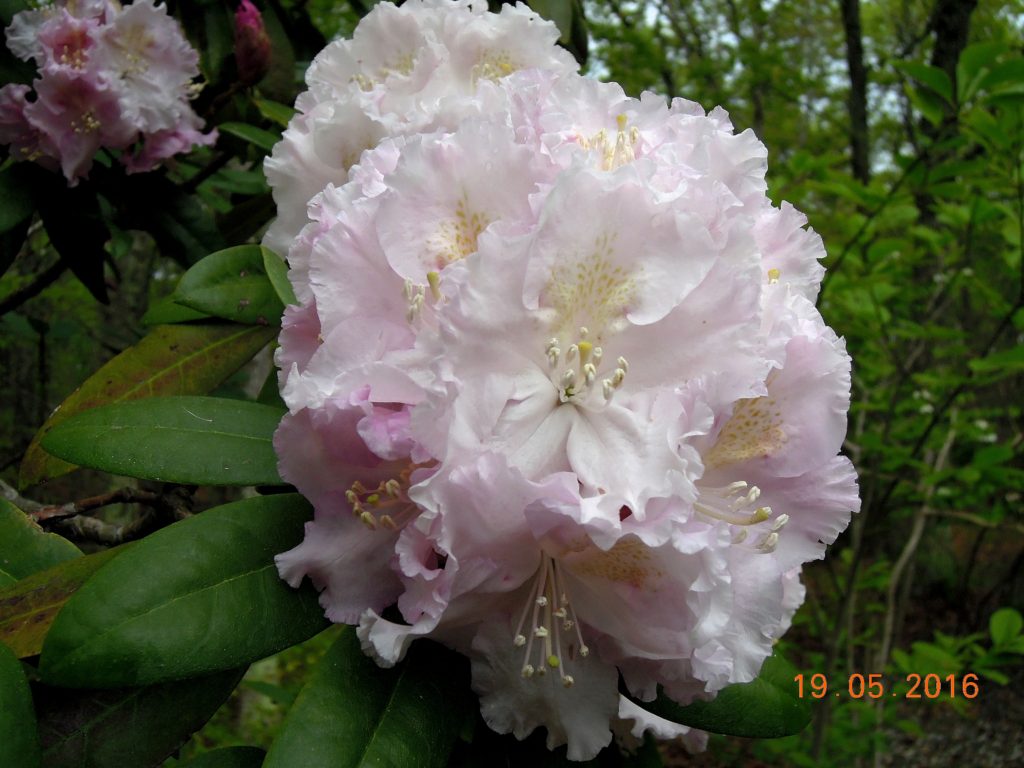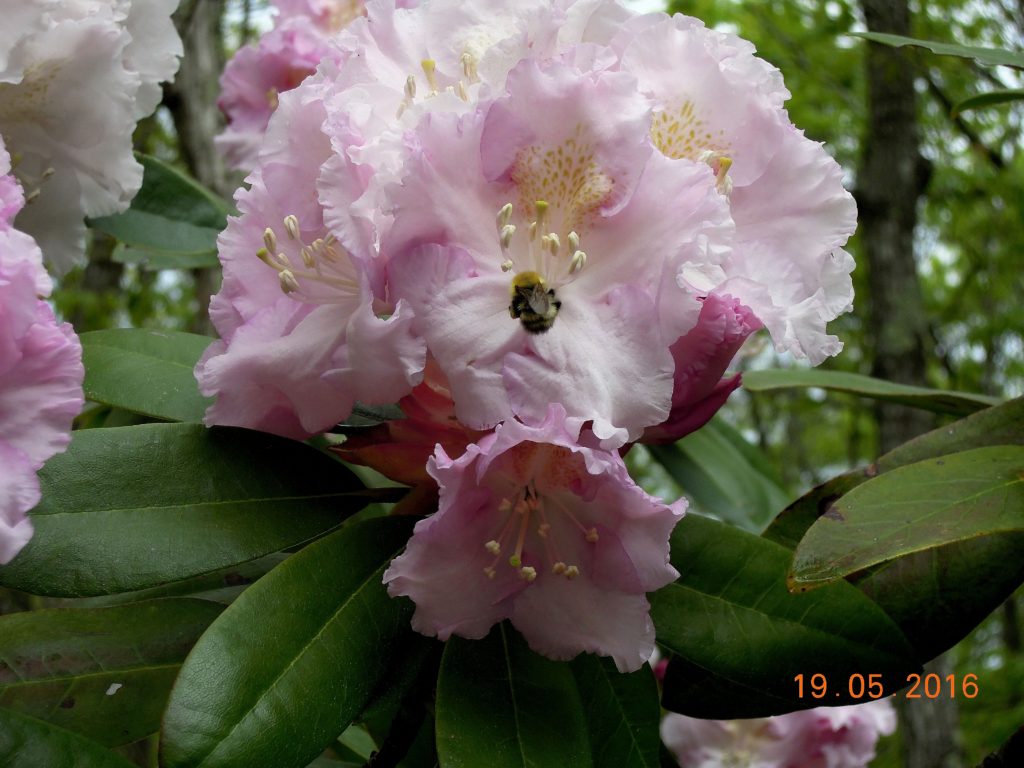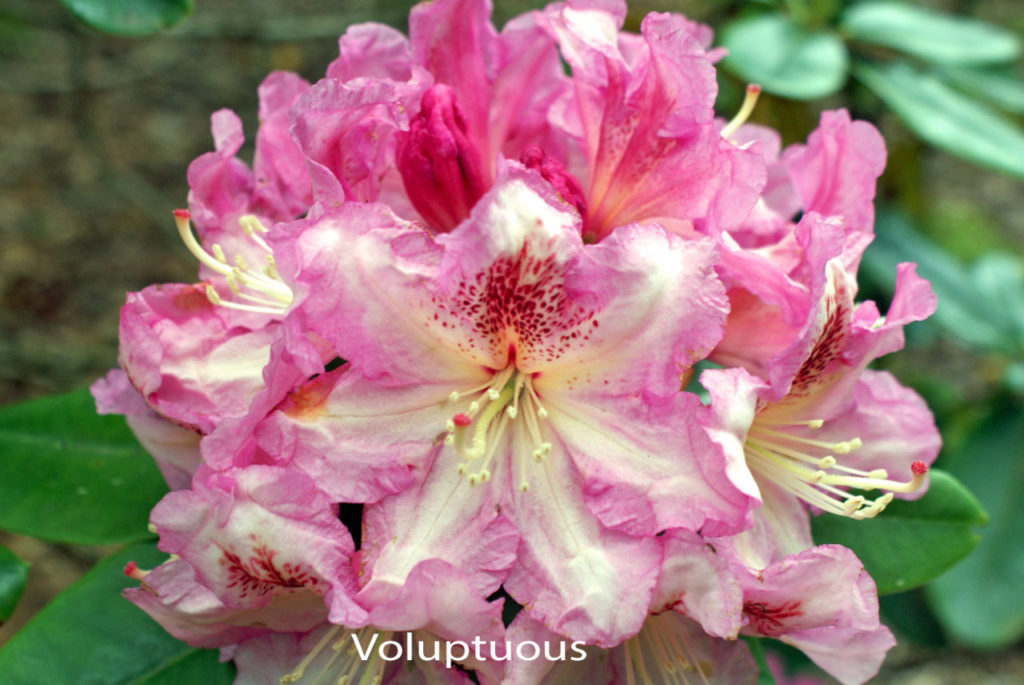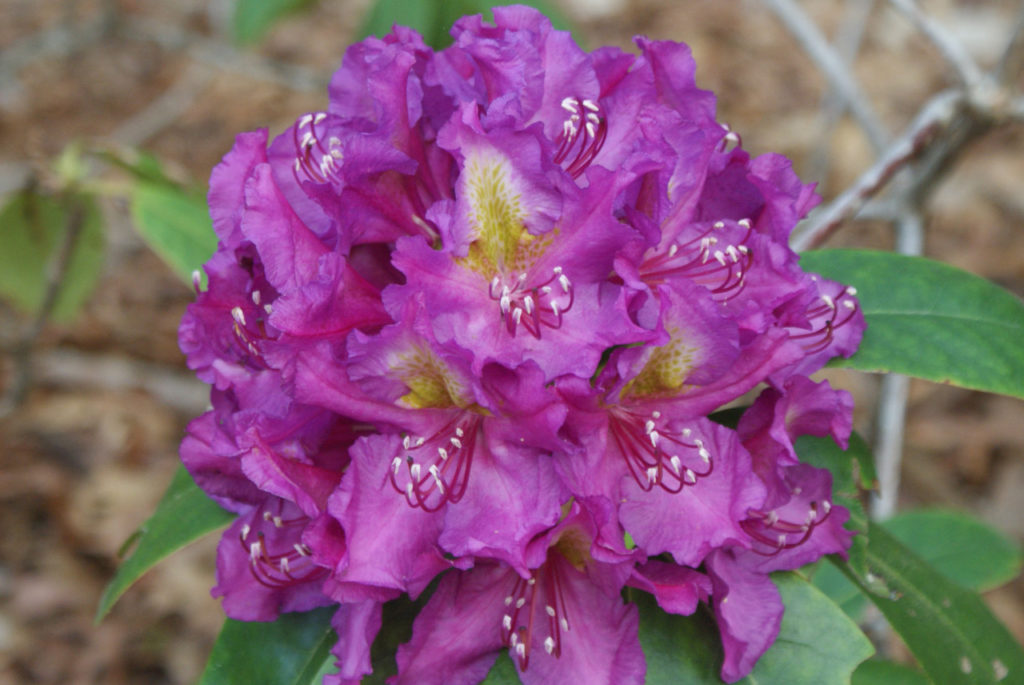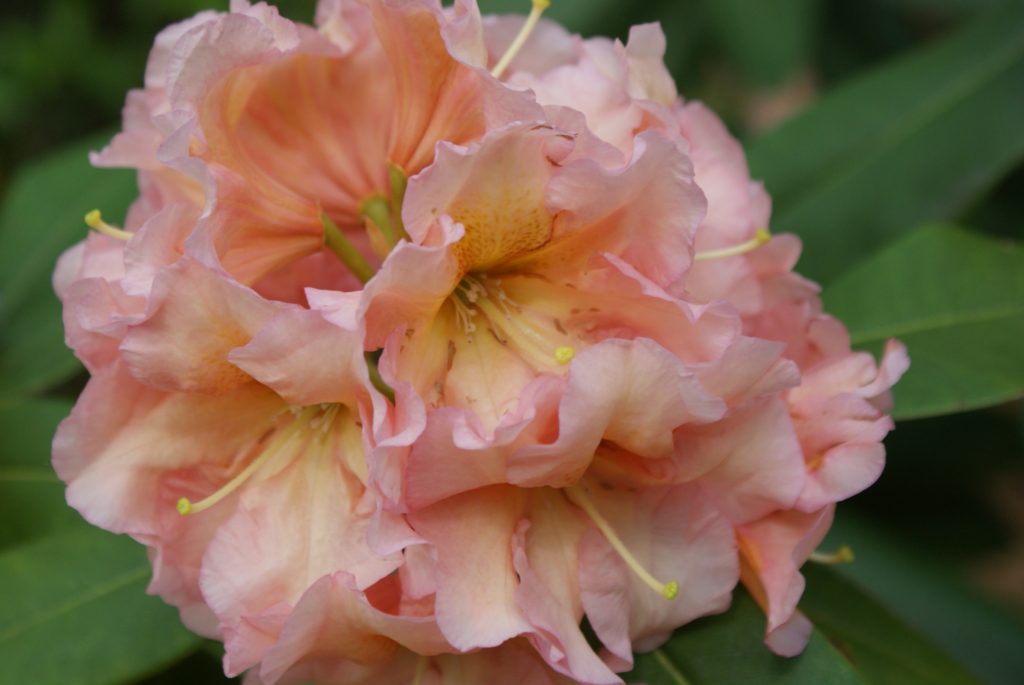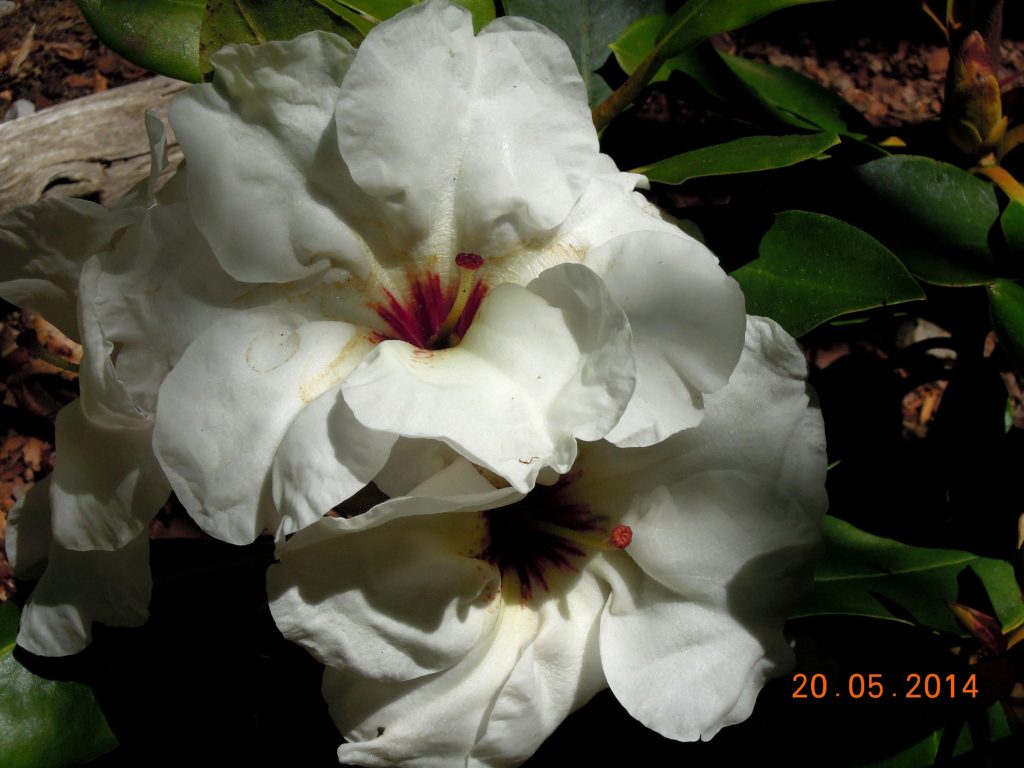Charles Owen Dexter is one of the most admired and interesting American plantsmen. He didn’t begin breeding Rhododendrons until his early sixties, yet his output was phenomenal: In the 1920’s and 30’s he produced well over 100,000 hybrid seedlings. Hundreds of these seedlings were given to public botanical gardens and the like, as well as to individuals.
Unfortunately, since Dexter didn’t keep breeding records or name his plants, confusion followed: Often the same seedling was grown in two different places with two different names. Or even worse.
Consider the controversy over the award-winning Rhododendron ‘Janet Blair’. The plant was growing amid a group of Dexter hybrid seedlings in the garden of Rhododendron hybridizer, David Leach. Leach named, introduced, registered, and sold the plant as his own, not as a Dexter hybrid. In fact, R.’Janet Blair’ was David Leach’s most commercially successful introduction.
Modern testing has now proven R.’Janet Blair’ to be identical to the Dexter hybrid, R.’John Wister’.
Whatever the legal or ethical ramifications — i.e. bragging rights, royalties, etc. — Dexter’s R.’Janet Blair’/R.’John Wister’ is a plant worth having. In addition to its virtues of fragrance, beauty and good health, it blooms at an early age and reliably thereafter. One of my favorites. (Photos below.)
I have two other Dexter hybrids with an interesting history. In the 1930’s, Henry Francis du Pont acquired from Charles Dexter several flats of seedlings and planted them at his Delaware estate, Winterthur. From the original seedlings that survived and flowered, sixty or so were selected as good doers and were given identifying numbers. Tiny seedlings of some of these numbered plants — propagated from cuttings — were included in the plant sale at the 2004 American Rhododendron Society Convention in Pennsylvania.
And that’s how Dexter’s Winterthur 7 & 8 came to grace my garden.
We anxiously waited a very long time for the tiny seedlings to bloom (2015 for 7 and 2016 for 8) but that simply increased our joy and celebration when it happened. (Photos below of 7 & 8 growing next to each other, followed by a closeup photo of 7’s flowers.)
[Note: When Winterthur numbered the Dexter hybrids, alongside the numbers 7 & 8 Henry du Pont noted: 7 (“pink, good flower”) and 8 (“clear mauve”). Our plant 7 is indeed pink and the flower is indeed good, but 8’s flower isn’t mauve. In fact, 8’s flower looks very similar to 7’s flower. Methinks maybe there was a tag mix up at the 2004 plant sale. No matter. We love both plants and applaud the American Rhododendron Society for making them available for home-garden purchase.]
2016 was a very good year for Rhododendron bloom. Worthy of mention here is a plant with a Dexter connection, R.’Cape White’, hybridized by Jack Cowles, the Superintendent/Horticulturist at the Dexter Estate from 1959-1967. Cape White’s flowers have raspberry buds that open to violet pink — before they fully open, the flowers look like cherry-vanilla ice cream cones — and eventually the high-domed, ruffled flowers fade to a light lavender. Quite somethin’. The bees agree. (Photos below.)
The Dexter Estate is now called Heritage Museums and Gardens, Sandwich, MA, and is open to the public. Among other things, there is a significant collection of Dexter and Cowles hybrids. In addition, for purposes of fund-raising, they offer members of the public an opportunity to name a Rhododendron. Check out the website: heritagemuseumsandgardens.org
Finally, let’s look to the future of Rhododendron breeding. Here are some of the outstanding hybrids bred by an accomplished modern-day breeder from Long Island, New York, Werner Brack. (Photos below.)
The future is golden.
